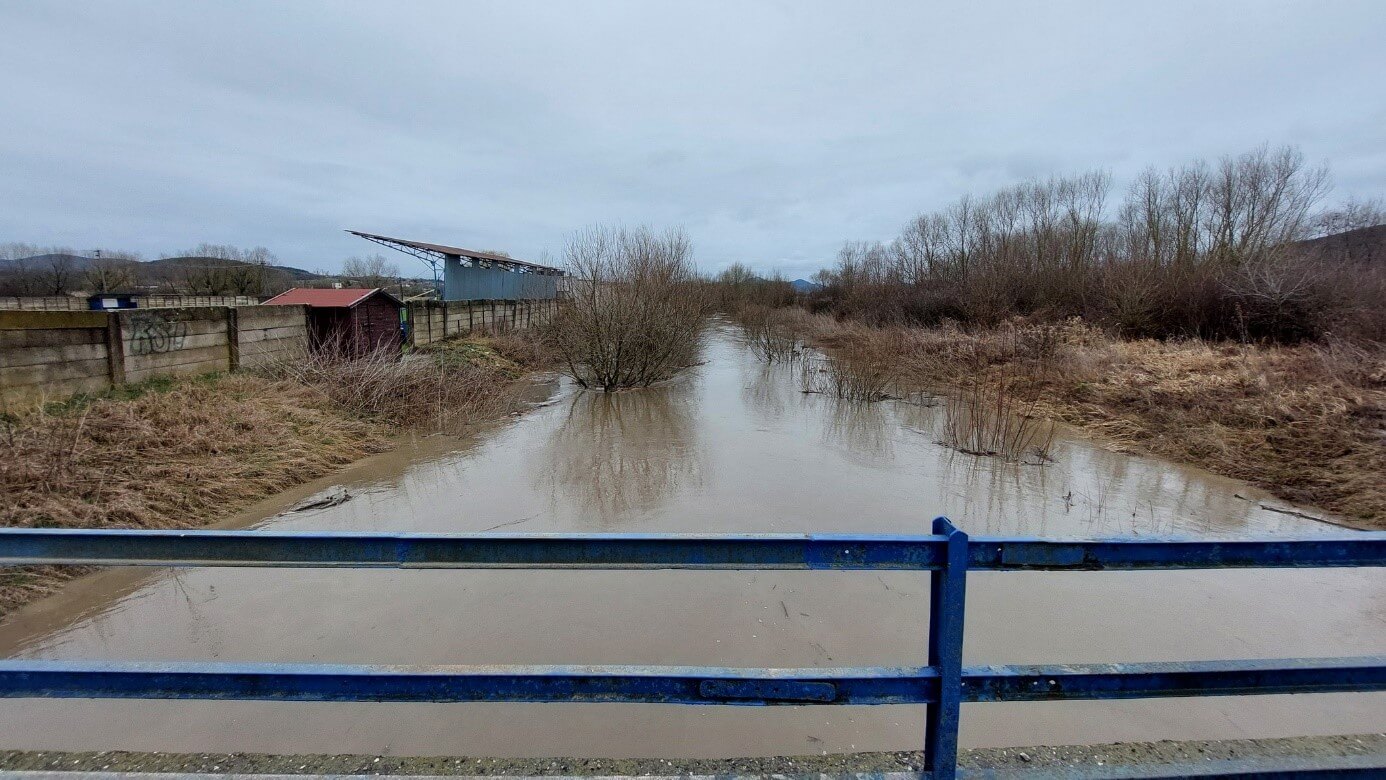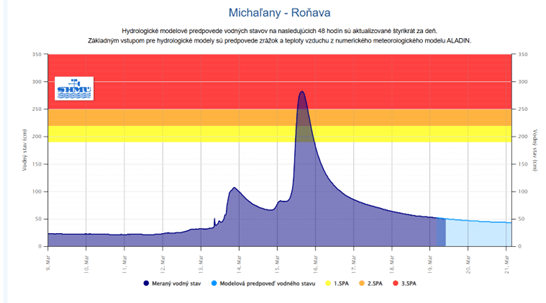Persistent drought and sudden downpours: the Roňava River at flood risk level 3
The Roňava river basin is once again facing a serious hydrological crisis as its water level has reached the third level of flood threat. Despite a prolonged period of minimal rainfall, a sudden and intense downpour can dramatically raise the water level, increasing the risk of flooding.
Causes of the current situation
A combination of natural and man-made factors contribute to this recurring hydrological problem:
Climate change and extreme weather: The Roňava river basin is prone to flash floods due to its geographical characteristics. The increasing unpredictability of rainfall, with long dry periods followed by intense rainfall, is a direct consequence of climate change.
Land degradation and poor water retention: Agricultural and forest land in the region has undergone significant changes, reducing its capacity to retain water. An analysis carried out by the LAND4CLIMATE project revealed that many areas in the basin have low water retention capacity, which increases surface runoff during heavy rainfall events. Drainage of agricultural land and river regulation: Large parts of the agricultural land in the Roñava catchment have been drained and the river itself has been artificially regulated to strengthen its banks. Although these measures were intended to regulate the flow of water, they inadvertently reduced the natural absorption capacity of the soil, making the area more vulnerable to both drought and flooding.
Topography and soil composition: The northern and central part of the basin consists of volcanic and clayey sediments with low permeability. During heavy rainfall, water does not easily infiltrate the soil, but instead drains quickly into the narrow floodplain, increasing the risk of flooding.
Precedent of March 2025
The events of March 15, 2025 serve as a stark reminder of the region's hydrologic vulnerability. After prolonged drought, a day of intense rainfall led to a rapid rise in the level of the Roňava River, highlighting the impact of sudden weather changes. Historical data shows that between 2001 and 2021, the monitoring station in Michaľany recorded Level 3 flood alerts 47 times, for a total of 99 days. This indicates that such flood events are recurring and require urgent mitigation measures.
Potential Solutions: Nature-Based Strategies
To address these recurring issues, the implementation of Nature-Based Solutions (NBS) is essential. Proposed measures include e.g.:
Rain gardens and infiltration structures to enhance water retention in built-up areas.
Infiltration strips and wetland restoration to slow down water runoff on agricultural lands.
Small dams and stream regulation to moderate rapid water flow.
Reforestation and soil stabilization to reduce erosion and improve water absorption.
The LAND4CLIMATE project aims to inspire private landowners to adopt NBS on their properties. By implementing these solutions, they can not only help mitigate flood risks but also retain water on their land during dry periods, making it available for agricultural use and improving soil fertility. Such measures enhance the overall resilience of the landscape, ensuring that both extreme droughts and sudden floods can be managed more effectively.
The Roňava River’s hydrological instability underscores the urgent need for sustainable water management. Without proper interventions, the cycle of droughts and sudden floods will continue to threaten both local communities and ecosystems. The integration of NBS offers a promising path toward mitigating these risks while enhancing regional climate resilience.
Publishing date:



